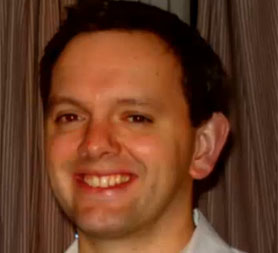Barrister shot lawfully by police, inquest finds
Barrister Mark Saunders, who was shot dead after pointing his shotgun at police at the end of a five hour standoff, was killed lawfully by officers, an inquest jury finds.

Mark Saunders, 32, died when Scotland Yard marksmen shot the barrister during a standoff at his home in Markham Square, Chelsea on 6 May 2008.
A jury at Westminster Coroner’s Court ruled that the lethal actions of police marksmen were lawful, proportionate and reasonable at the conclusion of a two-and-half inquest.
The panel found fatal shots to the head, heart and liver were “likely” to be caused by police shots that were lawfully fired in “reasonable self-defence”.
The jury said it was unclear whether Mr Saunders, an alcoholic, had deliberately committed “suicide by cop” by using his shotgun to provoke police to shoot him.
The five hour siege began in west London after Mr Saunders fired his shotgun while on the phone to a friend. Police negotiators later began talking to the gunman. Tapes played to the inquest revealed how negotiators had urged Mr Saunders to surrender his weapon while reassuring him he would come to no harm.
During the evening Mr Saunders fired several shots, and scrawled notes saying “want to kill myself” and “mum”, which he waved from the widow.
Video of the standoff was revealed to the jury showing Mr Saunders at the window of his home wielding a shotgun. Mr Saunders is shot by police as he directs his gun towards the ground.
Today the jury said more detailed consideration should have been given by police commanders at an early stage in the siege to using his wife Elizabeth or friend Michael Bradley to defuse the confrontation. But it added that this did not contribute to the deadly outcome.
Both Mrs Saunders and Mr Bradley asked to speak to the gunman, who also wanted to contact them, but they were told it was too dangerous and to switch off their mobile phones.
Mrs Saunders later found he had sent her a blank text message but her phone was off.
Today she sat with her head bowed and dabbed her eyes as the nine to two majority narrative verdict was returned.
In a statement she said: “From the day Mark died I have been committed to ensuring that the circumstances of his death should be subjected to a thorough and independent investigation.
“I did not approach the process with any pre-determined conclusions and I respect the verdict of a jury who have carefully considered all the evidence.”
‘Lack of clarity’
The coroner, Dr Paul Knapman, said today he would write to the Metropolitan Police to make a recommendation in light of evidence heard at the inquest relating to confusion over firearms officers.
The jury said there was a “lack of clarity” over who was responsible for frontline firearms officers during the siege, although they added it did not contribute to the deadly outcome either.
The inquest heard that Superintendent Michael Wise did not know two officers – one named only as Sergeant SE and Inspector Nicholas Bennett – were undertaking the role of bronze firearms commander.
The coroner said this may have contributed to the move to switch on static floodlights despite a decision by Mr Wise that this would be too dangerous.
It was claimed that this “fundamental” confusion had led to poor decisions over the positions of marksmen surrounding Mr Saunders.
Following the verdict the police said they would reflect on the jury’s verdict and evidence heard during the inquest.
“If someone dies following a police shooting it is only right the death is thoroughly investigated,” a police spokeswoman said. “We will now take the time to reflect on the findings of the jury and the coroner.”
In a joint statement released on their behalf, the Metropolitan Police firearms officers involved in the operation said they wanted to “express their heartfelt respects to the family”.
They added: “Since May 6, 2008, they have awaited the inquest to give their account of what actions they took and why they took them.
“All involved only ever wanted a peaceful resolution to the incident.
“Firearms officers are all volunteers, they perform a unique role in policing. They place themselves between the public and harm’s way. Nothing can adequately prepare a police officer for the actual taking of someone’s life.
“They all joined the police service to protect the public and save life.”